Its mahogany interior accommodates a removable compartmentalized liqueur display with a gilded bronze rack richly chiseled with Rocaille-inspired ornamental motifs (shells with wavy edges, scrolls and scrolls of acanthus foliage, flowers). encased in a sumptuous Trim in cut and faceted Baccarat Crystal composed of four Carafons and sixteen small stemmed glasses matching sophisticated bodies and lines enhanced with a scattering of stars and threads painted with fine gold.
Resting on four half-legs, this luxurious "Hand Cabinet" laced on its undulating profile with thick gilded brass strips bears, inscribed on the field of its lock, the stamp "TAHAN/ A PARIS"-Maison qui à she alone brilliantly illustrated during the second half of the 19th century "the fine cabinetmaking and tabletwork of Paris" of this sumptuous period in that it induces "the stamp of the best understood luxury and gracious elegance".
Key with floral pattern. Functional lock.
-------------
In view of its formal elegance, the luster and refinement of its marquetry matched by the sophistication of its crystalwork, this Liqueur Box "of the most delicate taste and workmanship" is to be counted among the most beautiful models of this furniture object created by Maison Tahan, which has won the approval of its "spiritual Parisian public" keen on its artistic "hand furniture" with aristocratic finery.
As such, it reconciles the remarks made by Mr. Humbert during his visit at the start of 1858 to this "splendid establishment so sought after by the delicate and elegant society of Paris" in particular for "its necessaries, boxes, liqueur cellars,.." which "are distinguished by the graceful stamp of simplicity and good taste. No heaviness in the ornaments, no pretension in the general composition: Mr. Tahan knows the respect he owes to his very special clientele. and the importance that it is, for the reputation of the House, not to deviate from the rules of judiciously understood art" (Artistic and Industrial Review, January 3, 1858, p.9).
Small comments on the famous Maison TAHAN (1806-1882)
Adored by crowned heads as "fashionable customers from all over Europe", Maison Tahan founded in 1806 by Pierre-Lambert (1780-1844) modestly established as a "cabinetmaker of boxes and kits" in the capital (at 10 rue Basse -des-Remparts) was able to acquire, thanks to the colorful personality of his son Jean-Pierre-Alexandre (1813-1892), a privileged place within the industry of fine tablets, small luxury and fancy furniture. , Competing with the no less distinguished representatives under the Second Empire of the luxurious and stylish Articles de Paris (Ch; Dielh, A. Giroux, P.Sormani, A.Vervelle, ..)., J.-P.-Alexandre Tahan awarded the titles - Supplier to the king and princes" (1845) then "to the Emperor" - (1855), and very laudatory terms - Off-line manufacturer", "Tablet artist, ..-obtained during the Exhibition of the Products of French Industry of 1849, of the Universal Exhibitions of 1851, 1855, 1867 distinctions and medals for the "undeniable superiority" of "its rich and sumptuous assortments" presented during these major events. Like the "public regularly amazed at the exquisite taste which presided over the execution" of these pieces of furniture, objects endowed with "a distinctive character", of a "constantly renewed inventiveness", the critics of the time ( E.Jouve, Lettres sur l'Exposition Universelle de 1855; E.Champeaux, L'Exposition Universelle de 1855) considered La Maison Tahan to be "one of the artistic, industrial and modistic glories that foreigners envy".
Also, until 1882 - the year in which P.A Tahan "a worker full of taste, full of finesse, full of relevance" retired from business - the Maison Tahan, sitting 34, Rue de la Paix (1849 -1866) then 11, Boulevard des Italians never ceased to offer in "its magnificent stores" regularly visited by representatives of the Crown and much sought after by the elegant world many "marvels of modern luxury". , were arranged "the boxes which are the specialty and the glory of this house". It is clear that during the Second Empire, "the productions of Mr. Tahan had acquired a" reputation such that it is not a rich and aristocratic house where there is not an object or piece of furniture that came from the hands of this true artist.
----------
Parisian fine tablet work from the second half of the 19th century signed by Maison Tahan (1806-1882). Napoleon III period, circa 1860.
Materials: Ebonized wood veneer and Cuban Mahogany; inlaid copper, brass and mother-of-pearl; cut and faceted Baccarat Crystal glassware with fine gold painted highlights.
Dimensions: Closed Liqueur Cellar: H.: 30 cm;-L.: 35 cm;-Dr.: 28 cm. - Crystal: Carafons: H.: 21.5 cm; -base: 8.5x8.5 cm; -Footed glass: H.: 7 cm
In a perfect state. Buffer varnish. Original crystalwork complete and intact. With its key and functional lock

























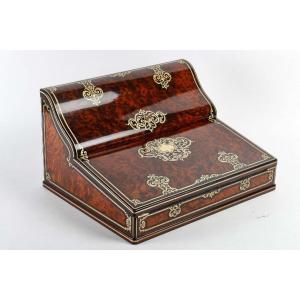
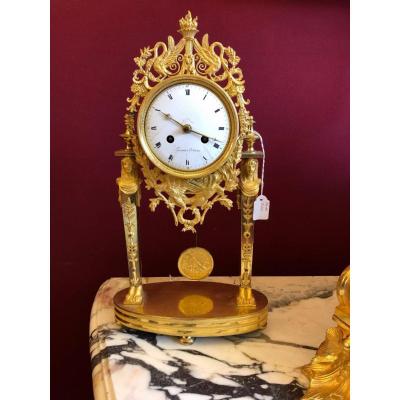

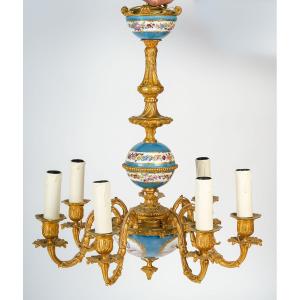


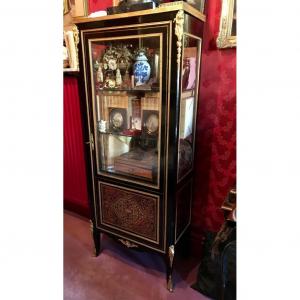


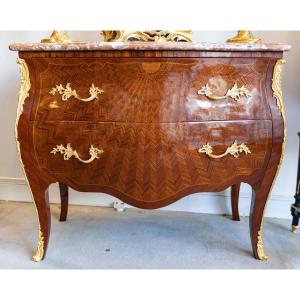
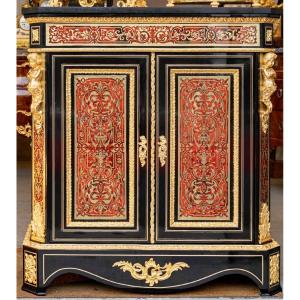
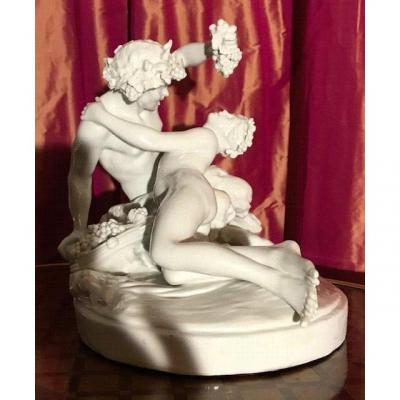
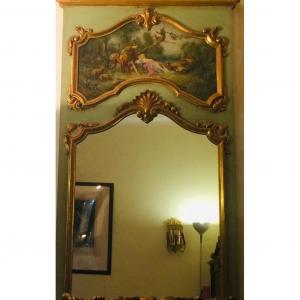

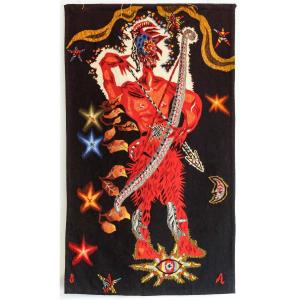
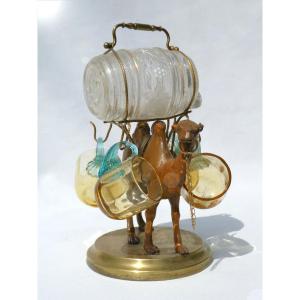



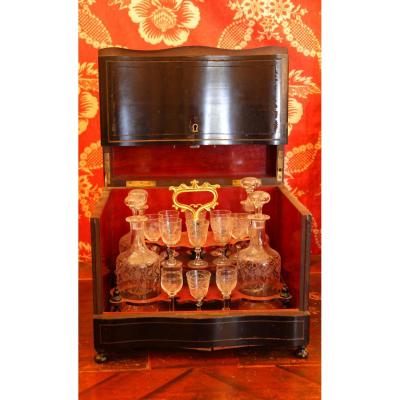



 Le Magazine de PROANTIC
Le Magazine de PROANTIC TRÉSORS Magazine
TRÉSORS Magazine Rivista Artiquariato
Rivista Artiquariato